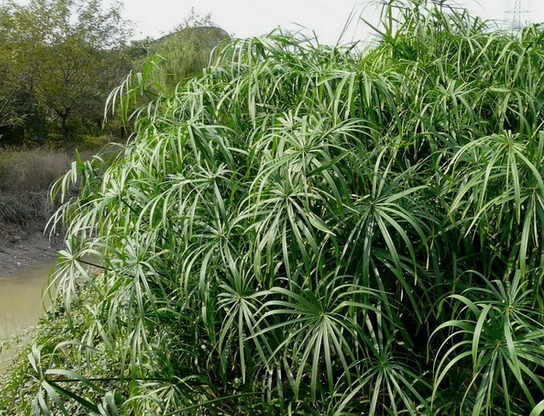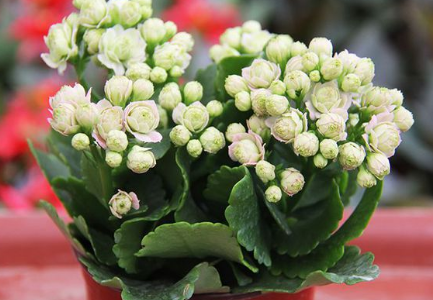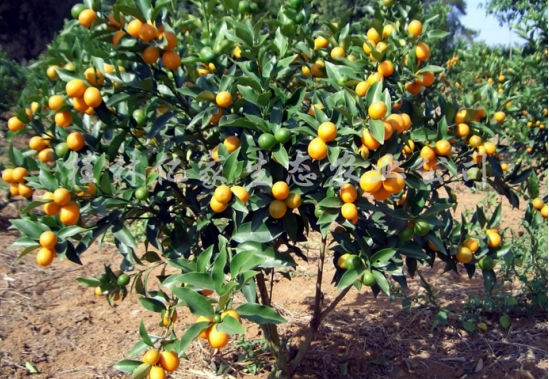How do you handle the yellow leaves of the bamboo culture and precautions?
To talk about this water bamboo, this is a kind of water-raised plant, there are many places, and the survival rate is very high, let's take a look at the water bamboo culture methods and matters needing attention? What if the leaves of Phyllostachys pubescens turn yellow:

Culture methods and points for attention of Phyllostachys pubescens:
Soil culture water bamboo:
1. Soil: vermiculite, river sand or loose soil can be used to maintain a certain humidity.
2, temperature, light: in summer high temperature, to keep the air humidity and basin soil moist, not strong light direct light, winter room temperature should not be less than 5 ℃, remember to put the water bamboo in the full day or semi-shady place, in summer in the semi-shady place is more beneficial to the growth of water bamboo.
3. Fertilization: apply dilute liquid fertilizer once every two weeks, and 400ppm paclobutrazol can be irrigated once in May, which can effectively control its high growth.
4. Watering: if you use tap water to water bamboo, you must precipitate it before using it, but you can often spray it on the leaf surface.
Hydroponic bamboos:
1. First of all, we have to cut and tilt 45 degrees at the bottom of the bamboo.
2. Put the cut bamboo into the bottle with water, not too much water, and the part from the bottom of the leaf to the water should be exposed about 1.5 centimeters.
3. It is recommended to change the water every three days, or once a day if conditions permit.
4. You'd better put the bamboos in a darker place and not be exposed to the sun.
Note:
If there is root rot, you must cut off the rotten part in time and expand the non-rotting part, preferably from the bamboo joint.
As long as there is a certain amount of light every day, the air is smooth, and often watering can grow stout, lush and green. The view is elegant and generous, giving people the enjoyment of beauty.
Sometimes when the seedlings are weak, a small amount of human urine and chemical fertilizer can be watered with water. When the water bamboo grows up, we can also match some small rockery and other embellishments to enhance the color.
What if the leaves of Phyllostachys pubescens turn yellow:
If the leaves of Phyllostachys pubescens just bought turn yellow is normal, after all, there is a process of adaptation to a different environment. Add a little nutrient solution to the bamboo, give some light, fertilize once every half a month, and if the temperature is less than 5 degrees, you still have to cover it with a plastic bag. And watering can not be watered every day, usually every two to three days.
The method of breeding water bamboo and the treatment of yellowing leaves have also been introduced, so hurry up to have a few plants in your own home.
What about the yellowing of the leaves of Phyllostachys pubescens? the causes and solutions of the yellowing and drying of the leaves of Phyllostachys pubescens
Phyllostachys pubescens is a common plant in people's life, it has a good ornamental, and it can not only be potted, but also can be planted in a large area. However, the ornamental plants will also affect their overall aesthetic sense if their leaves turn yellow. What if the leaves of Phyllostachys pubescens turn yellow? How to solve the yellow hair and dry hair of Polygonatum odoratum leaves? Next, the editor will take you to learn about it.
What if the leaves of Phyllostachys pubescens turn yellow? find the reason.
If we want to know how to do the yellowing of the leaves of Phyllostachys pubescens, first of all, we have to find the cause and know what is the cause in order to deal with it. Such as too strong light, improper fertilization and watering are the causes of this phenomenon, as for the specific solutions are described below, let's take a look.
Second, the causes of the yellowing and drying of the leaves of Phyllostachys pubescens, with solutions.
1. Improper fertilization should be diluted before application.
Fertilizer is one of the main nutrients in the growth process of Phyllostachys pubescens. If we apply too little fertilizer or the concentration of fertilizer is too high, it will cause the leaves of water bamboo to turn yellow. If it is fertilized too little, it will turn yellow due to lack of nutrients, and if the fertilizer concentration is too high, it will burn the plant and cause yellowing.
Solution: Phyllostachys pubescens has a high demand for fertilizer in the growth process, and its growth will be significantly better only after using fertilizer. Spring and summer are the peak growing seasons, so we should apply fertilizer frequently, but the fertilizer concentration should not be too high, and we must dilute it with water before applying it. If the concentration is too high, it is easy to burn the plant.
two。 Watering too little, keep the soil moist / avoid stagnant water
Phyllostachys pubescens prefers a warm and humid environment. When we breed it, especially after it enters the growing period, its demand for water is very high. If we always forget to water the plant, the lack of water will lead to the yellowing of its leaves.
Solution: if it is caused by too little watering, we do not have to pour water immediately, but step by step. If we irrigate too much at one time, it is easy to cause the plant to rot. Generally speaking, when the weather is relatively dry, it can be watered once every 3-5 days.
3. The light is too strong, pay attention to shade in summer
Phyllostachys pubescens is a kind of light-loving plant, if the light is more suitable in spring and autumn, we can keep it outdoors and let it receive light all day, but it is more afraid of strong light, so it still needs shade after entering summer. otherwise, if the light is too strong, it is easy to burn the plant and yellowing leaves.
Solution: if the leaves of Phyllostachys pubescens turn yellow because of the strong light, we should keep it indoors in half-shade in time, so that the leaves of a section of plants will slowly turn green.
4. Infestation of diseases and insect pests, timely treatment
In the process of culturing Phyllostachys pubescens, if it is not cultured properly, it is easy to have diseases and insect pests and other problems. This kind of problems do great harm to the plants, which will not only lead to the yellowing of the leaves, but also cause the plants to wither and die.
Solution: if this problem is caused by diseases and insect pests, we must deal with it in time, because the longer the time drags on, the greater the harm to the plant. The specific treatment methods are introduced in the article "Prevention and Control of Diseases and insect pests of Phyllostachys pubescens". You can learn about it.
5. The environment does not adapt to the normal phenomenon
If our Phyllostachys pubescens is bought outside, then it is easy to have the problem of yellowing of leaves when it is bought back, which is a normal phenomenon, because this is a manifestation of inadaptability to the environment and requires an adaptation process. Generally normal maintenance slowly it will return to green.
The Culture methods and precautions of Phyllostachys pubescens A collection of tips on how to raise water bamboo
Bamboo has always given people a sense of nobility and elegance, and many people have a special fondness for bamboo, and it will even be used in home decoration. Phyllostachys pubescens is a common bamboo ornamental plant, but potted plants can also be hydroponically cultivated, with stone rockery and so on. It will have a special charm in the study and living room, so how to raise it? The editor takes you to learn about the culture methods and points for attention of Phyllostachys pubescens:
Basic information of Polygonatum odoratum:
Phyllostachys pubescens (scientific name: Phyllostachys heteroclada Oliver) likes to grow in water, so it is a perennial herb of Cyperaceae. It is a dual-purpose bamboo with wood-based shoot. The bamboo body is slender, the internodes are long, the color is blue, the whip internodes are short, and the root system is well developed. The material is flexible, elastic, the fiber is extremely strong and the surface is smooth. Wild culms are generally one to two meters tall and about one centimeter in diameter. The tips are glabrous and the skin is dark green. The leaves are triangular or lanceolate. Branchlets are solitary, with three to five leaves. Spikelets contain three to four florets. The leaves of Phyllostachys pubescens remain green after flowering, and the underground parts do not die, unlike most bamboos, which die after flowering. Therefore, it has good ornamental value.
Culture methods of Phyllostachys pubescens:
Culture methods of soil-cultured water bamboos:
1. Soil: the requirement of soil is not strict, and the soil with rich and slightly sticky soil is suitable.
2. Watering: keep the soil moist during the growing season, or plant directly into a watertight basin, keep water about 5 centimeters deep in the basin, avoid the trouble of watering every day, and pay attention to foliar spraying to maintain humidity when the temperature is higher.
3, light: adapt to a wide range of light, full-day or semi-shady place can grow well, avoid scorching sun exposure, summer semi-shady place is more beneficial to its growth, can keep the leaves green not old.
4. Temperature: it is not cold-resistant, the open field in East China can survive the winter with a little protection, and the winter temperature is not lower than 5 ℃.
5. Fertilization: thin fertilizer should be applied frequently, and 1% compound fertilizer can be applied in spring and summer. Avoid applying too much fertilizer can easily cause leaves to turn yellow.
6. Insect diseases: leaf blight and red spider damage often occur. Leaf blight can be sprayed with 1000 times of topiramate and red spiders with 1500 times of dimethoate EC.
Culture methods of hydroponic bamboos:
It can be raised in soil in a flowerpot or in a container containing water. Aquaculture method can use lake water, river water, well water, falling water, precipitation 24 hours of tap water, preferably electrolytic ion water in acidic water, avoid using mineral water. Several colored glass balls or pebbles can be placed in the bottle to stabilize the bottle's center of gravity and increase its beauty.
Evaporation is large in summer, so pay attention to mixing and changing water so as to keep the water quality from pollution. Dry in autumn, to avoid being blown down by the wind, you can often spray to the leaves and let them bear night dew at night.
Phyllostachys pubescens is not very fertile, just use one or two pieces of fertilizer to dissolve it with water.
When the water bamboo is hydroponic, the water surface touches the upper end of the root 3 cm, do not immerse too much, lest the rotten root affects the respiration. If there is rod decay, the rotten part must be cut in time to expand the rot-free part, preferably from the bamboo joint. Generally speaking, once the water bamboo takes root, it is not easy to rot. In addition to cutting off the rotten part, you can also put some bright green treasures in the water to promote the roots.
Matters needing attention in the culture of Polygonatum odoratum:
1. Water culture of Phyllostachys pubescens is better in spring, summer and autumn, and can be potted in winter. Often watering can grow sturdy, lush and green.
2. In summer high temperature season, it is necessary to maintain high air humidity and basin soil moisture, avoid strong light, apply dilute liquid fertilizer every two weeks, and winter room temperature should not be lower than 5 ℃, such as insufficient fertilizer and water, crowded plants, low temperature and dry basin soil, which will make the stems and leaves yellow and wither.
3. Fertilize 1-2 times a month in the peak growing season. In order to control the height, 400ppm paclobutrazol can be irrigated once in May, which can effectively control the excessive growth of Phyllostachys pubescens.
4. Although water bamboo likes water, it can't be soaked in stagnant water. Flowing water is better.
5. Phyllostachys pubescens likes acidic and slightly acidic water. As the soil in most areas of the north contains more salt and alkali, bamboo will gradually lose green and turn yellow due to the lack of soluble iron elements that can be absorbed by flowers after a period of time. 0.2% ferrous sulfate can be watered once a month.
Propagation method of Phyllostachys pubescens:
Phyllostachys pubescens is often propagated by ramet and cuttage, and it can also be sown. The cuttings were carried out from June to July, and the healthy branches before flowering were most likely to take root. Take 3-5 cm from the top of the stem, and cut the whorled leaves in half to reduce water evaporation, then cut them to sand or vermiculite, make the leaves stick to the substrate, pour through water, and then keep the substrate moist for 20 days. The root system is slender and can be cut and planted, and the split can be carried out all the year round, but it is most suitable for turning the basin in the middle and late March. Sowing in April is also easy to germinate into seedlings.
Phyllostachys pubescens stem tall and leafy, hierarchical, elegant and natural, evergreen four seasons, ten excellent indoor ornamental plants, favored by bonsai lovers, the arrangement at home will also appear clean and elegant, but also show the taste of the host. The cultivation methods and matters needing attention of Phyllostachys pubescens are shared here. I hope it will be helpful to you. Please continue to pay attention to the flower column for more related information.
Read more:
Picture appreciation and material introduction of Zaobu in Daquan
- Prev

What if the leaves of longevity flowers don't grow up? what if they don't bloom?
To talk about this longevity flower, the florescence of this flower is relatively long, generally blooming is a red flower, to see if the longevity flower leaves grow how to do? What if the longevity flowers do not bloom: what if the leaves of the longevity flowers do not grow big: the soil is heavy, the soil of the longevity flowers should be loose and fertile, and the drainage should be good.
- Next

Culture methods and matters needing attention of kumquat trees what to do if they lose their leaves
To talk about this kumquat, this is something that many people like very much, and it is really too delicious to eat. Let's take a look at the breeding methods and points for attention of kumquat trees.
Related
- Fuxing push coffee new agricultural production and marketing class: lack of small-scale processing plants
- Jujube rice field leisure farm deep ploughing Yilan for five years to create a space for organic food and play
- Nongyu Farm-A trial of organic papaya for brave women with advanced technology
- Four points for attention in the prevention and control of diseases and insect pests of edible fungi
- How to add nutrient solution to Edible Fungi
- Is there any good way to control edible fungus mites?
- Open Inoculation Technology of Edible Fungi
- Is there any clever way to use fertilizer for edible fungus in winter?
- What agents are used to kill the pathogens of edible fungi in the mushroom shed?
- Rapid drying of Edible Fungi

